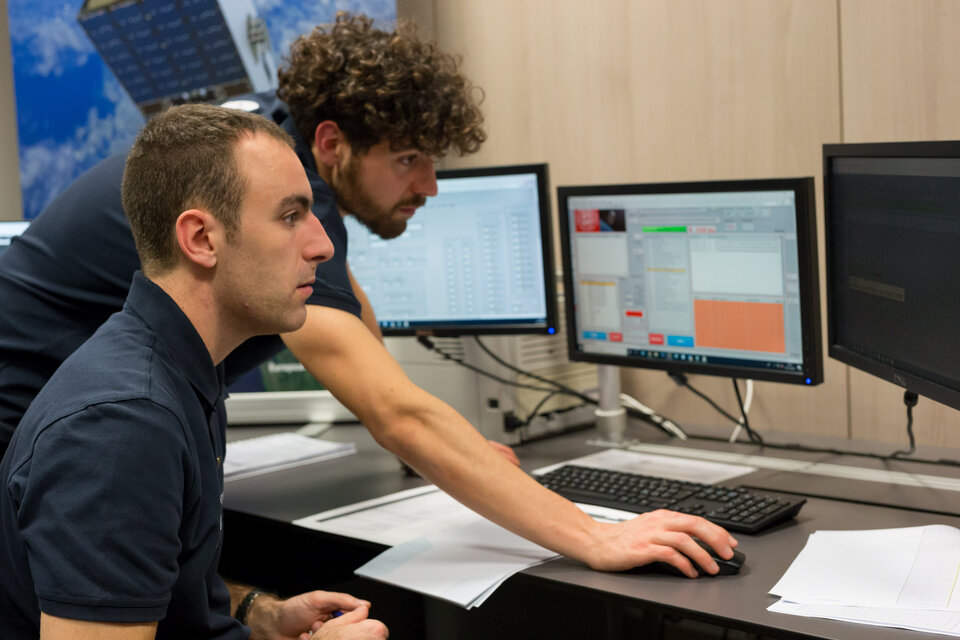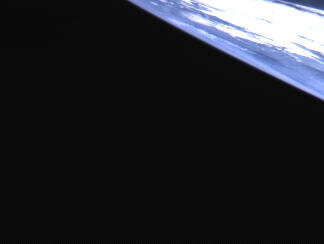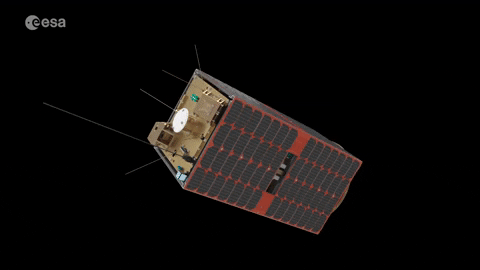ESEO in orbit: chronicle of challenges and successes
Having spent almost two years in space, ESA’s European Student Earth Orbiter satellite – ESEO – has proved to be an incredible learning experience for the almost 600 students involved in its development and operation.
ESA Academy and Prime Industrial contractor SITAEL worked closely with the students through every stage of its challenging, but ultimately very rewarding, mission. Now, at the conclusion of the ESEO experience, its obstacles and successes can be chronicled, along with memories from some of the individuals who had been personally involved.
Read the ESEO end-of-mission article here.
Lift-off!

On 3 December 2018 at 19:34 CET, the roar of a rocket’s engines signalled the successful launch of ESEO. Teams from 10 universities had worked on the satellite for many years, and finally their dreams were becoming a reality. Three hours later and the ESEO Mission Control Centre, managed by students of the University of Bologna, Italy, confirmed the acquisition of the first signal from ESEO. Present in the room was student Alberto Lucci. “In the last hours before launch, we checked the hardware and software of the Mission Control Centre to inspect the proper functioning of all equipment. We hoped for the best, but were prepared for the worst outcomes. In the end, the ESEO signal arrived, starting the most unconventional ‘conversation’ I’ve ever had!”
For extremely complex machines like satellites, technical challenges and issues at the start of a mission are always possible, and this did prove to be the case with ESEO. Antonio De Luca has worked at ESA’s ESTEC centre as ESEO System Engineer. He explains, “While ESEO was able to transmit spacecraft data to ground soon after insertion into orbit, for a few weeks it wasn’t able to react to commands sent from Earth. Working with dedication on long shifts, under the guidance of professionals from ESA and SITAEL, the Mission Control Centre students made several attempts to transmit commands to ESEO from different ground stations. The relentless support of the ESEO team in Tartu, Estonia, was invaluable. They offered a ground station capable of transmitting with higher power than originally planned, operating on a non-interference basis with other ground stations.” To everyone’s great relief, ESEO reacted!
Once this successful method of operating the spacecraft had been found, on 14 March 2019 the students from the University of Bologna succeeded in bringing ESEO from safe mode to nominal operating mode. “The event was unexpected,” recalls Alberto, “considering we were coming from a long period of strenuous attempts to bring it to nominal operating mode. As it happened, we rushed to the telemetry data, checking them several times. Imagine our joy when we realised that ESEO had surprised us once again!”
ESEO’s telemetry data indicated that all on-board subsystems were up and running, including the Sun sensors and momentum wheels needed to control the orientation of the spacecraft. The Mission Control Centre operators were then able to upload to ESEO, and by 21 March 2019 the spacecraft had received and processed all the commands needed to determine its exact orbital position and motion.
ESEO could then officially commence in-orbit commissioning, where all the spacecraft subsystems such as power, communication, attitude control, thermal control, and on-board computers, were thoroughly checked. Once that stage had been completed, each student experiment should have been tested, and the satellite’s mission would have begun in earnest. Little did the team realise that more challenges were just around the corner.
Stuck on repeat
The ESEO amateur-radio payload, designed and developed by AMSAT-UK, was successfully activated on the morning of 12 April 2019, and it started transmitting its payload telemetry. These data were received by many radio amateurs around the globe. Unfortunately, a few hours after the AMSAT-UK activation, ESEO experienced an anomaly that puzzled its operators. Instead of sending one notification to the ground station, it continually sent and resent, as if stuck on repeat. Explains Antonio, “the continuous use of the radio transmitter to send these notifications, in combination with the AMSAT-UK activation, led to a temporary discharge of the battery when the spacecraft was in eclipse. This under-voltage then triggered the protections to automatically shut down the AMSAT-UK payload.”
Then, on 28 August 2019, ESEO switched off both its main and redundant magnetorquers for reasons unknown – possibly radiation interfering with the On-Board Data Handling (OBDH) microcontroller. Operators could no longer directly control ESEO’s orientation, and interactions with Earth’s magnetic field increased the satellite’s spin from 20 degrees per second all the way to 60 degrees per second. When, a few days later, the OBDH unexpectedly activated its Earth and Sun sensors, the on-board batteries gradually drained and the probe entered survival mode, limiting power to just the receiver and On-Board Computer. This issue had an indirect but positive effect: with power in such short supply, ESEO finally stopped sending its notification message on repeat!
Hurdles to overcome
Considering the adage smooth seas do not make skilful sailors, these obstacles were tackled by the students in a methodical manner, providing them with valuable experience of diagnosing and troubleshooting. Eliseo Strollo was a student at the University of Bologna working in ESEO’s Mission Control Centre. He recalls, “dealing with the ESEO mission operations was a great proving ground, and offered professional growth for our team. Being able to solve some of the challenges we faced gave us a great sense of achievement.”
The efforts of the ground teams resulted in the batteries slowly recharging as the satellite completed its orbits of Earth. 48 hours later, and the transmitter was once again operational – a real testament to the design robustness of the power subsystem, allowing for a full battery recovery even after such a deep discharge.
The student operators, under guidance from ESA and SITAEL, could then resume their efforts to re-orient ESEO into its correct orbital position, thereby allowing the spacecraft to operate as originally intended. After this recovery, it was decided to resume the interrupted commissioning of the platform with the activation of the S-band transmitter (HSTX), and the validation of the ground segment dedicated to the downlink and processing of the scientific data. This activity involved the Mission Control Centre of Forlí; SITAEL; and the Universities of Wroclaw and Munich, which developed the space and ground elements of the chain, respectively. On 18 December 2019, the S-band communication chain from the spacecraft, through antennas at the Tartu Observatory (Estonia) and the University of Wroclaw (Poland), to the ground processing infrastructure in Munich (Germany), was successfully tested. As the S-band communication enabled the exchange of the scientific payload data, all those involved set their minds on the subsequent activation of the remaining payloads.

Unfortunately, another hurdle presented itself: ESEO’s temperature began fluctuating wildly, probably a result of the satellite facing toward and away from the Sun at unexpected angles. A year after launch and ESEO was still hobbling, but functioning enough to begin the commissioning phase of the payloads. Thanks to the skill and determination of the mission team, on 11 March 2020, the camera was activated and ESEO’s first picture of Earth was received! The image was overexposed, but that did not diminish the achievement of activating the camera and confirming functionality. Dr. Indrek Sünter from the University of Tartu helped develop ESEO’s camera during his time as a student. He recalls, “I was just about to leave work when I received the e-mail with the first decoded image. Happy about it, I announced the successful image acquisition to my colleagues. That evening the commute seemed longer than usual, as I couldn't wait to browse the decoded data for additional metadata and images!”
The high spirits were somewhat dampened by fresh transmission anomalies lasting almost a month. Contact was re-established thanks to sterling work from the team at Forlí Mission Control Centre, who by this time were forced to work from home due to the COVID-19 pandemic.
Regrettably, just a few weeks later on 20 April 2020, ESEO operations were again disturbed as the student operators were uploading telecommands to modify the camera settings to download improved pictures and in preparation of science payload activation. “ESEO suddenly stopped transmitting telemetry data,” says Antonio. “The last data received showed a gradual cooling down of the spacecraft, likely originating from the non-nominal attitude. Temperatures dropped below favourable conditions for battery recharge, and a gradual decrease in the power available on board was observed in the latest bits of communication. From this day, the Mission Control Centre made daily attempts to restart the transmission of ESEO, but without success.”
As ESEO had been in operation much longer than its intended lifetime, and since the re-activation attempts remained stubbornly unsuccessful for several months, ESA, SITAEL, and its partners made the difficult decision to conclude the mission. As a final attempt, commands have now been sent to ESEO to deploy the drag sail – a student payload designed to deorbit the spacecraft and reduce its remaining orbital lifetime. The outcome of this final experiment will be ascertained through monitoring orbital decay.
ESEO objectives and outcomes
Objective 1: Take pictures of the Earth for educational and outreach purposes using a micro camera developed by the University of Tartu Observatory, Estonia.
Outcome: Pictures of the Earth were successfully downloaded. The first image was overexposed, so was used to calibrate the instrument. Further pictures were of higher quality. Additional efforts to optimise camera settings were stopped short by ESEO’s end of life.
Objective 2: Test technologies for future ESA education missions using an S-band communication system developed by the Wroclaw University of Technology, Poland; a GPS receiver developed by the University of Bologna, Italy; an Attitude Determination Estimator coordinated by the Delft University of Technology, Netherlands; and a de-orbiting mechanism built by Cranfield University, UK.
Outcome: The S-band communication system was operated, and the S-band communication chain successfully tested and operated during the mission. Blind commands to unfold the de-orbiting sail were sent to the spacecraft during the final weeks. Unfortunately, the GPS receiver and attitude estimator could not be activated by the platform.
Objective 3: Operate ground stations at UHF and S-bands, with uplink and downlink of operational data handled by the University of Bologna, Italy; a back-up station managed by the University of Vigo, Spain; and all data from the satellite’s experiments transmitted to the University of Technology in Munich, Germany.
Outcome: Ground stations in Italy and Estonia operated throughout the whole duration of the mission, assuring radio communications with the satellite. The back-up station at the University of Vigo, Spain, was finally not required. The University of Wroclaw also helped receive radio signals from their ESEO equipment (HSTX).
Objective 4: Measure radiation levels in Low Earth Orbit with a Langmuir probe and TRITEL three axis dosimeter, developed by the University of Technology and Economics and the Academy of Science in Budapest, Hungary, respectively.
Outcome:Due to on-board anomalies on the platform, the spacecraft did not allow activation of the two instruments.
Objective 5: Enable amateur satellite radio connection to the satellite in VHF-band via the AMSAT payload, provided by AMSAT UK in cooperation with the University of Surrey, UK.
Outcome: The payload was activated in April 2019, and successfully transmitted a pre-selected subset of the satellite’s housekeeping telemetries. Amateur radio operations were later put on hold to allow the ESEO team to focus their efforts on platform recovery operations.

While there was mixed success in achieving the science objectives, ESEO’s overarching educational objective was certainly achieved: for university students to acquire hands-on experience of a real space project, in order to prepare a well-qualified technical workforce for the European space sector. The participating students took a space mission all the way from conception to operation in orbit. The hurdles they overcame along the way have contributed to a great deal of learning, and given them unparalleled experience that will serve them well in their future careers in the space industry.
ESA and its partners on the ESEO project look forward to future collaborations making use of the ESEO legacy to offer additional, on ground, training opportunities building on the lessons learned, ground hardware, and simulation models of the ESEO project.


